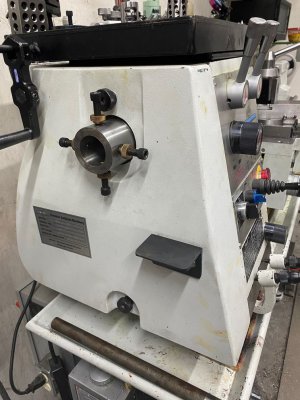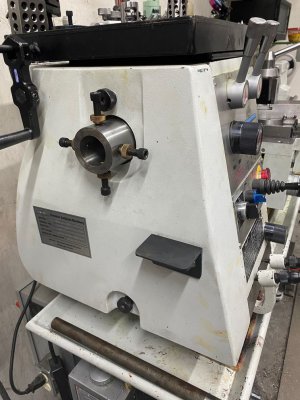- Joined
- Jun 12, 2014
- Messages
- 4,817
Not a big fan of turning 1018 CRS, but it is pretty common and inexpensive. Prefer to work with 4130/40 or 8620 for my spiders. My belt cover is also fiberglass on my current lathe and cast aluminum on my last one. I use a sliding test indicator using a zero-set on a pair of rails mounted to the cover, picture is my previous lathe. Can also be used for mounting other indicators. It slides forward out of the way or can be removed when not in use. I have an range of brass tipped spider screws and aluminum fingers.




